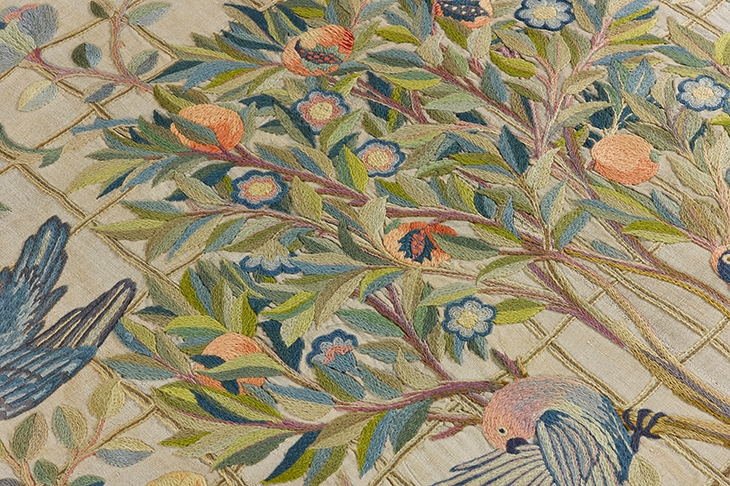You may think you don’t know May Morris, daughter of William, but you’ll probably have come across her wallpaper. Her honeysuckle design was and remains a Morris & Co. bestseller, and it not only features in homes to this day, it’s been nicked by designer Jonathan Anderson for a Morris-inspired range for the very expensive fashion house Loewe. It’s all a bit dispiriting for a woman whose aesthetic sensibility, like her father’s, was bound up in her socialism. But it was embroidery that was May Morris’s art and craft and now a new exhibition at the Morris Gallery in Walthamstow lets us see it in its own right.
The gist of May Morris: Art and Life is that her achievements were overshadowed by those of her celebrated father and were in any case overlooked because critics don’t rate needlework, not least because it’s mostly women’s work. But for William Morris and his firm, which revolutionised the way Brits furnished their homes, embroidery was an important element of its output and exemplified its guiding principles — beauty plus utility plus decent conditions for the worker. Her work deserves its own exhibition; as for her life, it merits more attention than it gets here.
As artist, May Morris was, unsurprisingly, a one-woman exemplar of the Morris philosophy. She learned art and design from her father and embroidery from her mother Jane and her aunt Bessie, a deaconess. So, from that apprenticeship she combined design work with its execution, and both with a very good grounding in the craft’s medieval precedents.
She studied at the precursor to the Royal College of Art in South Kensington, partly because of its access to the V&A and its splendid examples of Opus Anglicanum, the English needlework of the high middle ages (and the subject of a fabulous exhibition there last year).









Comments
Join the debate for just £1 a month
Be part of the conversation with other Spectator readers by getting your first three months for £3.
UNLOCK ACCESS Just £1 a monthAlready a subscriber? Log in